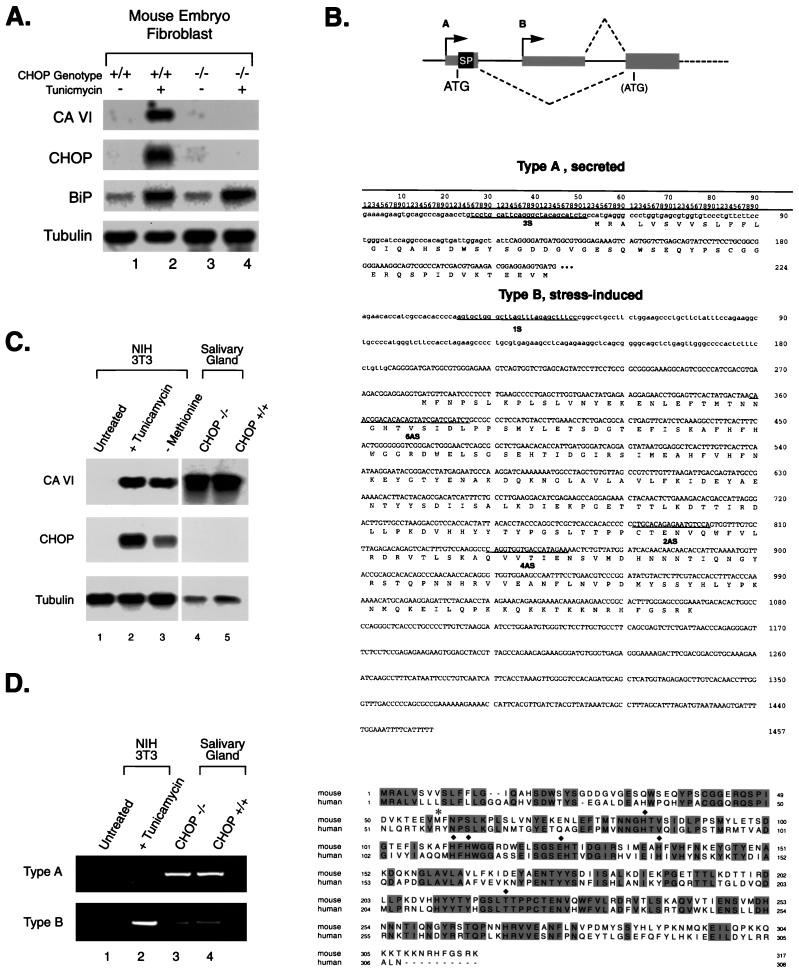FIG. 1.
A gene downstream of CHOP encodes a novel form of carbonic anhydrase VI. (A) Northern blot of total cellular RNA prepared from untreated and tunicamycin (2 μg/ml)-treated (10 h) chop+/+ and chop−/− fibroblasts. The blot was hybridized sequentially with a DpnII fragment of CA-VI obtained by representational-difference analysis of genes downstream of CHOP (31), followed by hybridization with CHOP and BiP (which served to document that a stress response had been induced) and Tubulin as a control for integrity of the RNA. (B) (Top) Diagram depicting the structure of the 5′ end of the murine CA-VI gene. A indicates the promoter that is active in salivary glands and that directs the expression of a secreted form of the protein with a signal peptide (SP). B indicates the internal, stress-induced, and CHOP-dependent promoter that encodes an intracellular form of the protein. Coding regions are indicated by wide boxes, and noncoding regions are indicated by thin boxes. Introns are presented as thin lines. The positions of the two initiating methionines are indicated. (Middle) Nucleotide sequences of the mRNAs encoding the secreted (type A) and stress-induced (type B) proteins. Lowercase letters are used to indicate nucleotides contributed by exons unique to either type of mRNA, and uppercase letters are used for those residues common to both forms. The methionine at codons 222 to 224 of the type A sequence corresponds to codons 285 to 287 of the type B mRNA. The positions of the PCR primers used in performing the RACE and RT-PCR analyses are indicated. The DpnII fragment constituting DOC1/CA-VI corresponds to nucleotides 870 to 1394 of the type B mRNA. (Bottom) Alignment between the amino acid sequences of the secreted forms of mouse and human CA-VI. Identical residues are shaded, the asterisk denotes the initiation codon for the type B protein, and the diamonds denote residues that are essential for enzymatic activity and conserved between all carbonic anhydrases. (C) Northern blot of total RNA from NIH 3T3 cells left untreated, treated with tunicamycin, or exposed to methionine-deficient medium for 16 h (left blots) and RNAs from the salivary glands of mice with the indicated CHOP genotypes (right blots). The blot was sequentially hybridized with CA-VI, CHOP, and Tubulin probes. The exposure of the left blot was approximately five times longer than that of the right blot. (D) RT-PCR analysis of the RNAs from panel C with primers specific for the type A and type B mRNAs.

